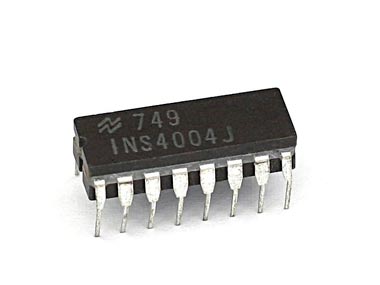With a small ad in the magazine Electronic News on 15 November 1971, Intel launched its first commercially available CPU (central processing unit) - the Intel 4004. CPUs, or microprocessors, are the chips at the heart of your computer, phone, TV and dozens of other household and industrial devices.
Originally built to power the Japenese-built Busicom 141-PF calculator, Intel persuaded Busicom, who actually owned the design, to allow them to let them sell the chip commercially. It was a huge success, leading eventually to the 8088 chip which powered the IBM PC and its clones.
The Intel 4004 had 2,300 transistors, could make 1,200 calculations per second and was made from one single piece of silicon, a breakthrough that had eluded others trying to make CPUs. Since the days of the Intel 4004, CPU design has made massive leaps forward. Says The Inquirer :
[caption id=“attachment_131820” align=“alignleft” width=“380” caption=“Without the microprocessor, our world would be very different indeed.Konstantin Lanzet via Wikimedia Commons”]
[/caption]
Compared to the Intel 4004, today’s second-generation Intel Core processors have more than 350,000 times the performance and each transistor uses about 5,000 times less energy. In this same time period, the price of a transistor has dropped by a factor of about 50,000.
Intel chief technology officer Justin Rattner said, “The sheer number of advances in the next 40 years will equal or surpass all of the innovative activity that has taken place over the last 10,000 years of human history.”
The Intel 4004 also provided more grist to the mill of Moore’s Law , which notes that the number of transistors on, and therefore power of, microprocessors doubles every two years. Although there are frequent predictions that the physical limits of chip manufacture are being reached, thus ending Moore’s Law, technological advances allow the trend he observed to continue.
The continued increase in chip capability, along with ongoing reductions in size and power requirements, mean that microprocessors can now be put in almost any device you can think of. Nvidia’s quad-core Kal-El chip will be cropping up in mobile phones and tablets soon and will “make your mobile device faster than a speeding bullet.” The upcoming ARMv8 64-bit chip will be able to have up to 128 cores and is expected to reach the market in 2014 .
Without the microprocessor, our world would be very different indeed. But the changes we’ve witnessed over the last 40 years are just the beginning, as we find more and more uses for these tiny little slivers of clever silicon.
)